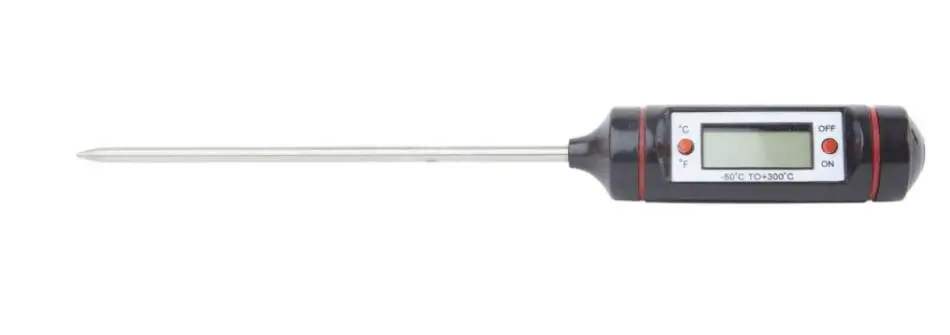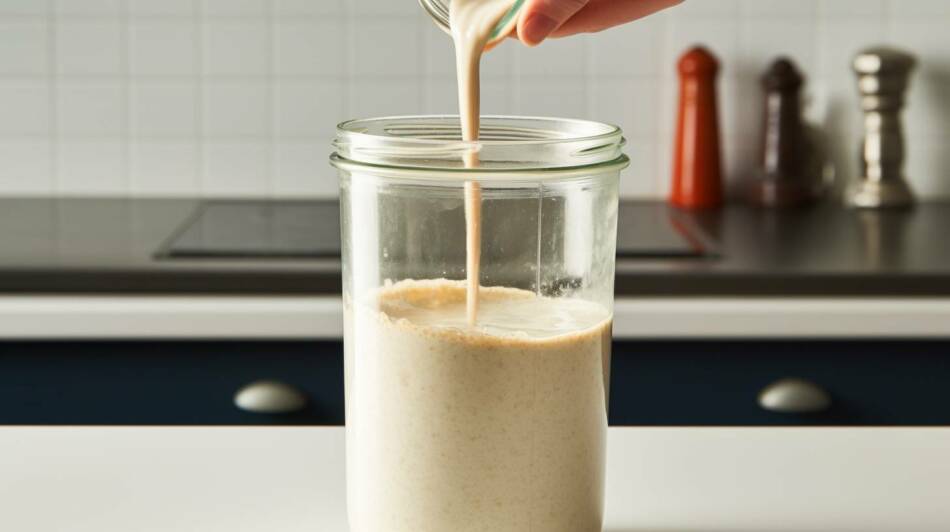Sourdough starters are a living culture, and like any living thing, their behavior can change over time and under different conditions. If you’ve noticed that your sourdough starter is runnier than usual, you might be wondering what’s behind this change in consistency. Let’s explore the factors that might be making your sourdough starter runny, and how to bring it back to its desired thickness.
If your sourdough starter is too runny, adjust the hydration by using less water or adding more flour during feedings. Remember, white flour absorbs less water than whole grain, reduce water with white flour starter. Maintain regular feeding intervals and monitor ambient temperatures, as warmth can accelerate fermentation, further thinning the starter.
The Causes of a Runny Sourdough Starter
a. High Hydration Level
Hydration plays a pivotal role in determining the consistency of your sourdough starter. Essentially, it is the delicate balance between water and flour. Starters can span a spectrum of consistencies, from the robust dough-like texture to the more fluid, batter-like nature.
A runny starter might be the result of excess water during the feeding process. Precision is the key. Make adjustments in the water-to-flour ratio by either reducing the water content or increasing the flour quantity in subsequent feedings.
To achieve the best consistency, always measure ingredients by weight rather than volume.
b. Changing Type of Flour
Every flour type comes with its unique absorption capacity:
Whole grain flours, such as whole wheat or rye, are renowned for their greater water retention capabilities. These can culminate in a starter that’s notably thicker.
In contrast, white flours, particularly those with diminished protein content, often result in a more liquidy starter.
Changing the flour type in your sourdough starter can sometimes throw off your starter’s consistency. If you’ve embarked on experimenting with a new flour, contemplate reverting to your previous choice or finetune the water-to-flour balance to harmonize with the new flour’s absorption characteristics.
c. Over Fermentation
Sourdough starters are living ecosystems. If they are neglected and remain unfed over lengthy durations, particularly in warmer conditions, they can enter an over fermented state. This not only escalates the acidity but also deteriorates the gluten network, making the starter turn watery.
Maintain a vigilant feeding schedule of at least once a day at room temperature; 78°F (25°C) to 82°F (28°C) .
In scenarios where your starter has morphed into a highly runny form and emanates an overpoweringly acidic aroma, it’s advisable to discard a fraction of it. Subsequently, feeding the remaining starter with fresh flour and water at a 1:1:1 feeding ratio should solve the problem.
You can also introduce a touch of salt to slow down fermentation, or alternatively store the starter in the refrigerator after feeding. If refrigerated, the starter only needs to be fed once a week.

d. Temperature
Temperature is a key factor in the fermentation rate of your starter. As temperatures rise, so does the speed of fermentation. If left unchecked, this can swiftly result in a starter that’s more watery, especially if it’s been a while since its last feeding.
If temperatures are on the warmer side, you might want to increase your feeding intervals, making them more frequent. Alternatively, positioning your starter in a cooler corner of your home can make a difference. And for those seeking a more controlled approach, refrigerating the starter between feedings is a tried-and-true method to decelerate fermentation.
e. Inactive Starter
The heart of your sourdough starter is a bustling community of yeasts and bacteria. However, there are times when this microbial community might take a backseat, leading to reduced gas production. When this happens, instead of the characteristic frothy appearance, your starter might look flat and liquidy.
Reigniting the strength of your microbial community can be as simple as adhering to a consistent feeding schedule. Incorporating whole grain flours, laden with nutrients, can be another effective strategy. These flours can serve as a buffet for the yeasts and bacteria, ensuring they’re active and the starter remains in its optimal state.
Is it okay to bake with a runny sourdough starter?
Absolutely, it is okay to bake with a runny sourdough starter. However, there are a few considerations to keep in mind:
a. Adjustment of Recipes
Depending on the consistency of your starter, you might need to tweak your bread recipe, particularly the hydration levels. A runnier starter will introduce more liquid into the dough, which can affect the final texture of the bread.
b. Flavor Profile
A runny starter, especially if it’s due to extended fermentation times, might have a more pronounced sour flavor. This can be a boon if you enjoy a tangier sourdough, but something to be wary of if you prefer milder flavors.

c. Rise & Texture
The overall activity of the starter, rather than its consistency, will determine how well your bread rises. If the runny consistency is due to a very active fermentation, your bread may rise well. However, if the starter is runny because of inactivity or overfermentation, the rise might be compromised.
d. Handling the Dough
A runnier starter can result in a wetter dough, which can be a bit challenging to handle, especially during shaping. You might need to adjust your kneading technique or use a bit more flour during the process.
Conclusion
A runny sourdough starter isn’t necessarily a sign of a problem, but understanding why it’s happening can help you adjust your practices to achieve the consistency you desire. Remember that maintaining a sourdough starter is as much an art as it is a science, and getting to know your starter’s quirks and preferences is part of the journey.


